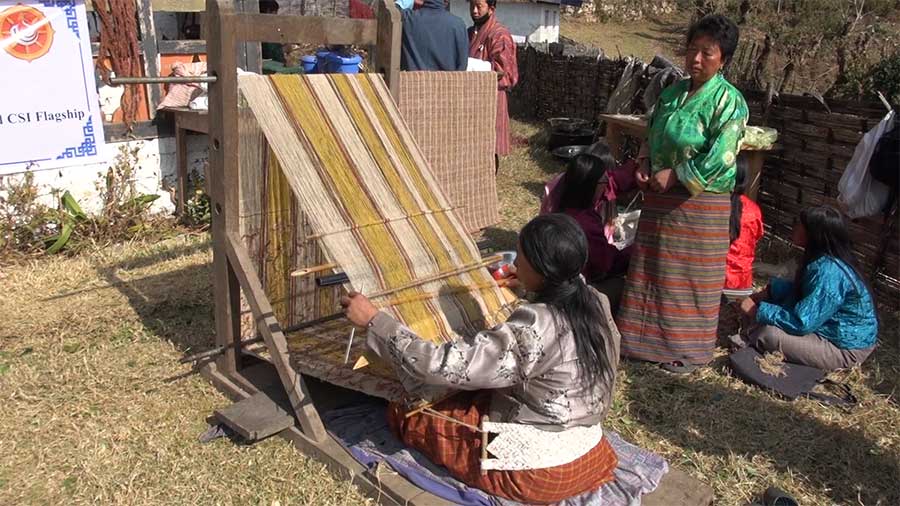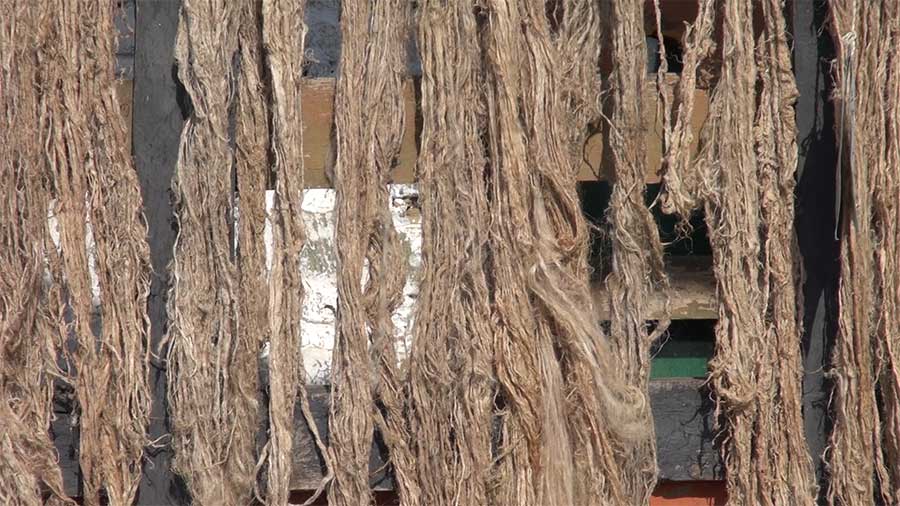
About seven years ago, a group of women from Drupkhang village of Lumang Gewog in Trashigang started reviving the practice of weaving using nettle plant. However, the programme did not yield the expected outcome. The women’s group is finding it difficult to find a market for their products.
 Women in Drupkhang village harvest nettle plant around mid of the year to get better quality fibre.
Women in Drupkhang village harvest nettle plant around mid of the year to get better quality fibre.
They peel the bark of the plant and soak it in water which is then boiled in ash water.
The bark is then beaten until the dirt and cover are removed completely.
After that the boiled bark is hung to dry in the sun. Once it is dried, the women begin extracting fiber using traditional method.
The group consisting of 17 women has been weaving table cloth, Rachu, bags and even gho pieces since the initiation of the revival programme.
However, extracting yarn using the traditional method is labor-intensive. Moreover, the quality of yarn extracted using the old spinning tool is not up to the mark thereby affecting the product marketing.
“Currently, we are making yarn using the old method. But it is difficult to get uniform sized fibre. If we have a machine, we would be able to extract fibre of same size like the kind of bura thread. Since we extract the fibre manually, the quality is not very good,” said Yangchen Lhamo, a member of the Drupkhang Zangra Tshogpa in Lumang Gewog.
“I sell the products myself. I sold some in Thimphu last time. Although I did not get much orders until recently, things have improved a bit after a few friends posted on Facebook. We will be motivated to weave more products if we have a proper market to sell,” added Sonam Choden, a weaver at Drupkhang in Lumang Gewog.
If the marketing issue is not addressed at the earliest, the women here fear that their age-old tradition of weaving using nettle plant will vanish once again despite the initiation of the revival programme.
In order to encourage these women to weave more using diverse colour, the Trashigang District Administration with support from the Ministry of Industry, Commerce and Employment organised a two-week-long natural dying training. The group members learned to prepare yarns of different colours.
“Until the training, we knew the process of dying only three colors of fibre, yellow, red and black. Now, as we learn to dye using locally available raw materials, we can make around 15 different colors of fibre. As a result, we are now planning to weave Ada Rachu,” said Yangchen Lhamo.
“Now, we are trained to prepare fibre of various colours and I am hoping we can weave different patterned Kira and even Kishu Thara which consists of various colours,” said Sonam Choden.
To ease the marketing challenge, officials from Trashigang said they will be purchasing a spinning machine with support from Ministry of Industry Commerce and Employment. As of now, they are looking for a dealer and the machine is expected to reach within three months. The women’s group will have to bear 20 per cent of the cost.
The district has also opened a local product outlet in Trashigang town last month.
Sonam Darjay, Trashigang
Edited by Phub Gyem








